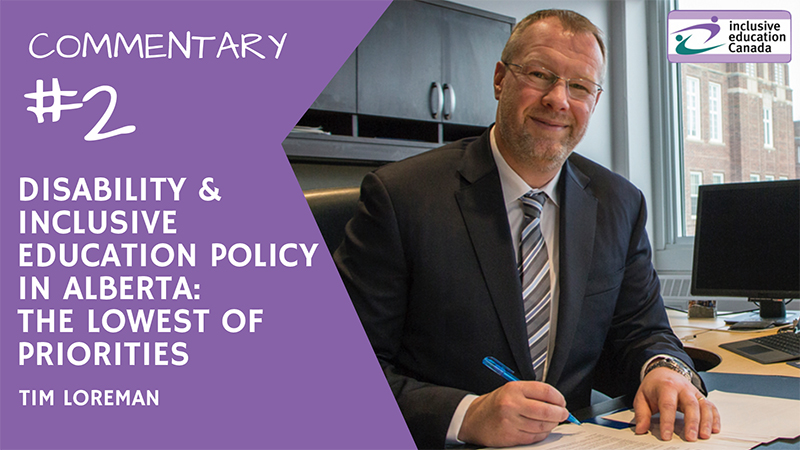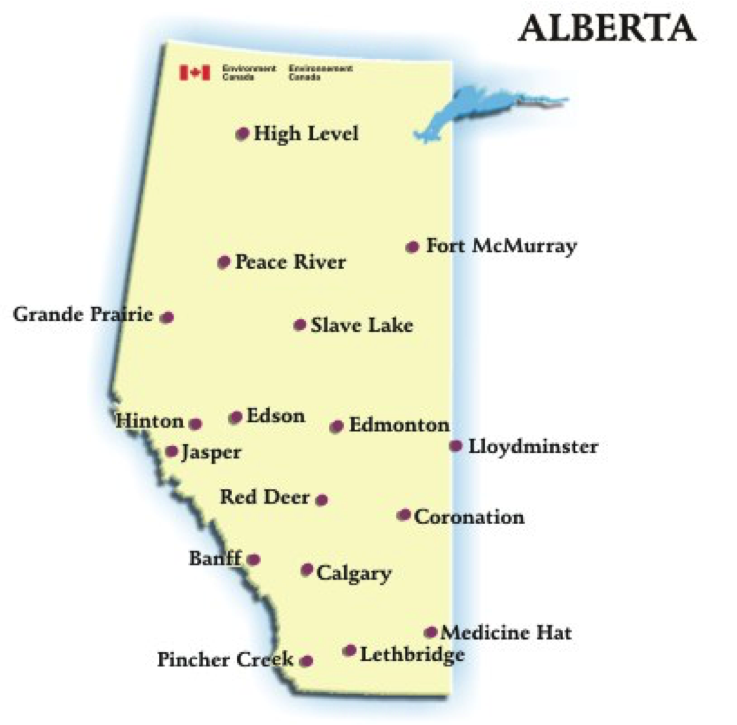 National Inclusive Education Month Commentary #2
National Inclusive Education Month Commentary #2
By Tim Loreman, PhD, Concordia University of Edmonton
I’ve written in the past about policy, legislation, and inclusive education in Alberta, but over the last couple of years have taken a step back from this work thanks to a new role I have taken on at my university. My previous writing could be viewed as critical of the previous conservative government approach to inclusive education in Alberta, a description I would not shy away from. Since 2015, however, the Notley NDP government has been in power with much talk of inclusiveness and supporting diversity, attendance at Pride parades, and the legislating of student Gay-Straight Alliance clubs in schools, all of which much of Alberta seem to agree with. With this socially progressive mood in mind, when I revisited where we are now at in terms of inclusive education policy for learners with disabilities in Alberta I expected to see similar change in favour of inclusion. Unfortunately, I did not.
I was surprised to see that Alberta schools still rely on the Ministerial Order, amended in 2004, called the Standards for Special Education as the main policy for inclusive education. I have been critical of this policy in the past. It did a poor job of supporting inclusion and inclusive practice in schools in 2004, and is all the more tired and outdated in 2018. It expressly enables exclusion, providing parents are consulted (define that as you will), and due to its age and the highly individualized practices it requires is an embarrassing policy foundation for any school system claiming to be modern, effective, and inclusive.
 Alberta Education, however, has a more recent Inclusive Education Policy (2015) that seems designed to supplement and in some ways perhaps transcend (although the latter is not stated) the Standards for Special Education. This policy, that reads more like an introductory preamble to a policy, refers to goals in the Ministerial Order on Student Learning, itself a brief 2013 document from the previous government. Alberta’s Inclusive Education Policy is a mere two paragraphs long, much of which is taken up with a laundry list of categories of diversity. I am able to quote it in its entirety from the website here:
Alberta Education, however, has a more recent Inclusive Education Policy (2015) that seems designed to supplement and in some ways perhaps transcend (although the latter is not stated) the Standards for Special Education. This policy, that reads more like an introductory preamble to a policy, refers to goals in the Ministerial Order on Student Learning, itself a brief 2013 document from the previous government. Alberta’s Inclusive Education Policy is a mere two paragraphs long, much of which is taken up with a laundry list of categories of diversity. I am able to quote it in its entirety from the website here:
Alberta’s education system is built on a values-based approach to accepting responsibility for all children and students. Inclusion is a way of thinking and acting that demonstrates universal acceptance of, and belonging for, all children and students.
To support children and students in attaining the goals as stated in the Ministerial Order on Student Learning, school authorities must ensure that all children and students (Kindergarten to Grade 12), regardless of race, religious belief, colour, gender, gender identity, gender expression, physical disability, mental disability, family status or sexual orientation, or any other factor(s), have access to meaningful and relevant learning experiences that include appropriate instructional supports.
While additional fragmentary, brief, and questionable resources and clarifications are provided on the Inclusive Education Policy website the actual policy itself represents the bare minimum. Not only is the language used vague and broad, but it does not require schools to actually do anything. Lip-service is being paid to creating inclusion and belonging in schools while ignoring any requirement for action in this regard, aside from that which has been required since 2004 in the Standards for Special Education. It is the policy equivalent of a student dashing off an assignment in the five minutes before it is due simply to have submitted something.
Devoting such minimal attention to policy is problematic. There are those who might argue that policy development is little more than a bureaucratic exercise that does not have much of an impact in schools and classrooms and on individual students. I do not agree. Policy, when done well, provides a guide for practice and obliges school systems to behave in ways they might not otherwise. If we as a society truly feel that diversity is our strength, as we seem to regularly agree on social media, then our policies, supports, processes, and institutions should all reflect that. Supporting diversity and ensuring that people feel and are included, are meaningfully participating, and have an equitable opportunity to contribute is the real task, and this process requires sound and explicit policy to guide it. Alberta’s Inclusive Education Policy is a) not really a policy, and; b) does not guide practice.
Perhaps these deficiencies in part help to explain why inclusive education in Alberta continues to be stuck in the 1990s. There are some who will say that our current government has simply not had the time to initiate and implement changes in inclusive education policy for learners with disabilities in Alberta. These apologists, however, might want to consider that nearly three years have passed since their election in May of 2015. In that time government has had plenty of opportunity to make changes and yet over these past three years we have seen almost a complete absence of action in policy and legislation with respect to improving inclusive support for learners with disabilities in our schools. The Government of Alberta has most certainly had time to act, and has done so in other areas, but it seems has not had the motivation or vision to do so in the area of inclusive education for learners with disabilities. Unfortunately, it appears to me that the provision of quality inclusive education for learners with disabilities in Alberta schools continues to be the lowest of government priorities.
Tim Loreman, President, Concordia University of Edmonton, is an Inclusive Education Canada Associate.
